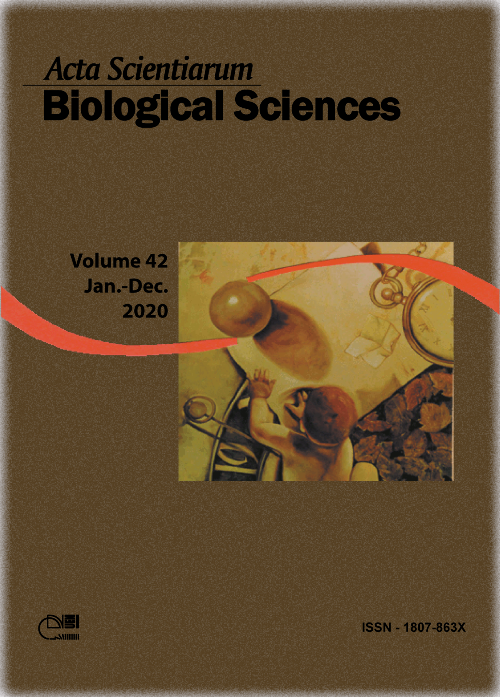Probiotic supplementation causes hematological changes and improves non-specific immunity in Brycon amazonicus
Resumo
A commercial probiotic containing Bacillus subtilis (109 CFU g-1) was evaluated in caged matrinxã, Brycon amazonicus, by measuring hematological parameters and macrophage activity after 42 and 84 days after feeding. The product was added to commercial feed using 2% soybean oil as a protectant. A randomized three-treatment experiment was performed using four replicates per treatment. The groups included: (a) control without probiotic, (b) 5 g kg-1 probiotic, and (c) 10 g kg-1 probiotic. For hematological analysis, eight fish per treatment were used to determine total cell count (RBC); thrombocytes, differential, and total leukocyte count (TLC); hematocrit (Htc); hemoglobin tax; mean corpuscular volume (MCV); and mean corpuscular hemoglobin concentration (MCHC). Furthermore, plasma cortisol and glucose levels were measured in blood samples. Macrophage phagocytic activity was evaluated by injecting Saccharomyces cerevisiae (11,000 cells in a 3 mL volume) into the coelomic cavity incubating for 8 hours. Addition of probiotics to the diet of caged matrinxã altered the Htc, RBC, MCV, MCHC, TLC, lymphocyte, and eosinophil values. We observed increased cortisol and glucose levels and phagocytic activity, but no increase in the phagocytic index. We thus conclude that supplementing caged Brycon amazonicus with probiotics improves their non-specific immunity and alters blood profiles.
Downloads
DECLARAÇÃO DE ORIGINALIDADE E DIREITOS AUTORAIS
Declaro que o presente artigo é original, não tendo sido submetido à publicação em qualquer outro periódico nacional ou internacional, quer seja em parte ou em sua totalidade.
Os direitos autorais pertencem exclusivamente aos autores. Os direitos de licenciamento utilizados pelo periódico é a licença Creative Commons Attribution 4.0 (CC BY 4.0): são permitidos o compartilhamento (cópia e distribuição do material em qualqer meio ou formato) e adaptação (remix, transformação e criação de material a partir do conteúdo assim licenciado para quaisquer fins, inclusive comerciais.
Recomenda-se a leitura desse link para maiores informações sobre o tema: fornecimento de créditos e referências de forma correta, entre outros detalhes cruciais para uso adequado do material licenciado.












1.png)




3.png)













